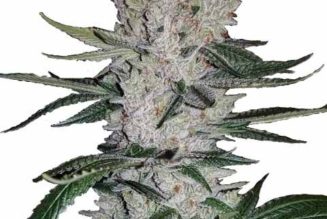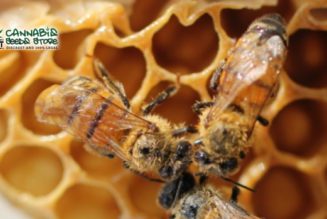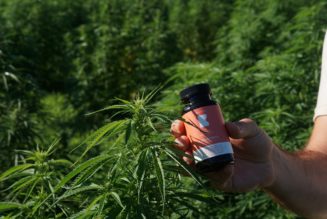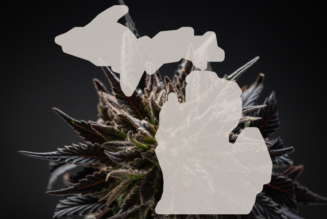Joining the CBD (cannabidiol) market has little to no barriers at the moment. It requires low startup costs compared to several wellness-focused industries. You can do it through brick-and-mortar shops, e-commerce platforms, or combinations of these business models.
However, in a market as young and competitive as this, the biggest challenge tends to be differentiating your CBD brand from the rest. Why does brand identity matter? How should yourself apart from the rapidly growing number of business rivals? And how can you maintain the momentum once you have gotten your CBD brand off the ground?
We shall tackle all these questions and more in this post dedicated to aspiring CBD entrepreneurs.
The Importance of Branding for CBD Startups
Let’s be honest here. The CBD industry is attractive because it continues to be highly unregulated. Despite the growing interest among consumers, the guidelines released by the FDA (Food and Drug Administration) for manufacturers and sellers aren’t as strict as the ones imposed on other natural remedies and dietary supplements.
Unfortunately, the gray areas in the CBD industry have led to its oversaturation. Just a few years after its legalization, thousands of companies focusing on CBD and other popular cannabinoids have sprouted rapidly. While some top CBD brands still dominate a large portion of the market, the demand continues to reach higher peaks each year.
Considering the stiff competition among CBD entrepreneurs, only the businesses with solid branding and marketing strategies will prevail in the coming years. It’s easier said than done, however.
Many startups fail to recognize how brand positioning can make or break the entire business. Since many people assume CBD is the new cure-all, beginners who didn’t do the proper research beforehand aim to appeal to the general public rather than focus on a promising market niche.
That is not to say that you shouldn’t offer a wide variety of products. Your business may sell CBD oils, edibles, topicals, and vaping products, as long as your brand positioning is aligned with the needs and preferences of your target market. Otherwise, your startup company will likely fail to catch or hold customers’ attention long enough to gain their loyalty to your brand.
4 Steps to Build Your CBD Brand
Branding is tough regardless of the industry. This challenge is even more formidable for new CBD businesses because it seems like every other company has already done what you have in mind. It’s not entirely helpless, though.
To find the optimal positioning and develop effective marketing strategies, we have outlined below the four steps you need to take to establish a CBD brand that can leave a lasting impact on the customers:
- Understand your target market
- Check out your competition
- Define your unique value proposition
- Establish your brand strategy
Step #1: Understand your target market
Every good marketing plan starts with knowing your target market. Skipping this step will deprive your business of its focus and direction.
Take a look at some of the best-selling CBD brands today. Some focus on individuals with intense lifestyles, such as athletes or military personnel. Others excel at providing sleep aids, while a growing number of brands are releasing CBD anti-aging products.

A simple but practical way to go about this is by answering a series of questions that will help you understand the needs and wants of the customers you wish to attract. For example:
- Who is your target audience?
- Where do they live?
- What CBD laws or regulations apply to that area?
- How much is their average purchasing power?
- Do they need CBD for its therapeutic benefits?
- Do they intend to use CBD for recreation?
- What is their preferred CBD product type?
To gather information related to these questions, try to interview, conduct a survey, or host a focus group discussion involving individuals who belong to your target audience. If you don’t have the resources for initiatives like these, look for reliable statistical reports about the current and future state of the CBD industry.
Remember to write down your responses to these questions so that you can refer to your notes as you move forward to the next steps of developing your CBD brand.
Step #2: Check out your competition
Competitor analysis helps in pinpointing the ideal positioning for your CBD brand. The first thing you should do is create a list of your competitors who have the same target customers like yours. Don’t limit your search to CBD brands only. Consider the conventional medications and other natural alternatives operating within your chosen market niche.
Next, get to know their respective businesses. Check how well the customers have received them and how they have grown since then. Take note of their primary selling points, and identify their advantages and limitations. Recognizing where the gaps lie would tell you the best way to enter the market and grab the interest of your prospective customers.
Step #3: Define your unique value proposition (UVP)
This step aims to figure out what will convince your target customers to choose your CBD brand over the others. What are you bringing to the table that no other business is doing now? Again, you don’t want to be a brand specializing in nothing in particular. You must differentiate your business through a UVP that resonates with your target audience in an overly saturated market.
To help you with this step, below are some practical tips on establishing the UVP of your CBD brand:
Study the UVPs of your business rivals
By doing so, you will have a better idea of how to create a UVP that appeals to the target market while also minimizing the possibility of having a UVP that is too similar to theirs.
Use clear and understandable language
Think of how your target audience speaks. Incorporate the words they typically use and avoid industry jargon or outdated terms.
Include the vision and mission of your CBD business
Stating the goals and beliefs of your brand will help the customers recognize and understand what you are trying to do for them.
Connect your brand’s UVP with the target audience’s needs or wants
Highlight how your CBD brand and its products can be of value to them.
Step #4: Establish your brand strategy
At this point, you have all the essential elements needed to create a brand strategy for your CBD business. Your goal is to have a distinct brand identity that your customers will recognize and remember.
A brand strategy serves as a guide on how you will promote your CBD brand and products. Go over your notes about your selected market niche, competitor analysis, and UVP. Then, think about the goals of your business in general. Your brand strategy should consist of plans and milestones that will take you closer to achieving your goals as a CBD entrepreneur.
What Should You Do Next?
Once the branding of your CBD business has been finalized, it’s time to head out there and let your presence be felt. To do this, consider making the following action points for your new CBD brand:
Communicate your brand identity to all involved
More likely than not, you’re not starting this business independently. If you need additional startup funds, potential investors or financing institutions will want to know how your business will stand out in the crowded CBD market.
Trade partners such as suppliers or service providers should also know your brand identity to better fulfill your CBD business requirements. In case you hire employees, they need to learn and understand your brand identity so that they can effectively carry out the brand strategy afterward.
Enhance your brand’s online exposure
Nowadays, marketing is dominated by influencers and affiliate promotions. Collaborating with individuals who are trusted and respected by your target audience will significantly boost the presence of your CBD brand in the market. Building your online presence shall also enable you to interact with potential customers at much lower costs than on-site brand events or store promotions.
Engage in content marketing
Publishing quality content about CBD will keep your customer base engaged with your business. This can be in articles, videos, or podcasts consolidated in the blog section of your brand’s website. While we encourage creative and unique content, ensure that every post is strategically aligned with your brand identity.
Invite a marketing specialist to your team
Though you can be on top of all brand-related activities for your CBD business, consider hiring or consulting a marketing professional who can create and carry out a marketing plan according to your brand’s positioning in the CBD industry. After all, not everyone is a natural at promoting products or keeping the customers interested despite the overwhelming pressures from established CBD giants and other CBD startups like yours.
Achieving long-term success as a CBD brand requires a deep understanding of your target audience, close competitors, and future market trends. The business and its products must stay true to your brand identity, and you should work hard in conveying your unique value to the customers.
After all, the branding of your CBD startup isn’t limited to its marketing strategies. Instead, it serves as one of the foundations for every aspect of the operation—may it be dealing with your customers, managing your employees, or handling your business transactions.
The post Building a Unique CBD Brand: Why and How It Should Be Done appeared first on CBD Product Reviews and Information – Everything About Cannabidiol.











